Chickens with Flu and Pigs Who Dive
A few items from around the world of factory farming this week: Bird Flu in the U.S.: As of Tuesday, May 5th, just under 26 million…
A few items from around the world of factory farming this week: Bird Flu in the U.S.: As of Tuesday, May 5th, just under 26 million…
At a briefing in Beijing yesterday, Dr. Keiji Fukuda, an assistant director general at the World Health Organization, called H7N9 “definitely one of the most lethal influenza viruses we’ve seen.”
He added that “the potential development of human-to-human spread cannot be ruled out.”
Children playing along a river bank spot hundreds of bloated pig carcasses bobbing downstream. Hundreds of miles away, people are grossed out by the rising stench…
Scientists have picked up the work they were doing last year creating deadly bird flu viruses in laboratories in the United States and Denmark.
The purpose of the research, they argue, is to find ways to protect us from the increasingly deadly new pathogens. But we already know how to protect ourselves from bird flu: Do something abut the terrible conditions at factory farms where these diseases are incubated.
A new strain of bird flu has adapted to harbor seals. The H3N8 strain was discovered after 162 seals were found dead on the beaches of…
Chickens at a factory farm in Mexico Two and a half million chickens have been slaughtered in the last few weeks in 31 factory farms in…
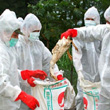
happened upon a website called The Poultry Site, which describes itself as a “portal for the global poultry industry.” Its news section includes a Guide to Avian Flu, where you can “catch up with the latest bird flu news from across the globe.”

The H5N1 virus (aka bird flu) is rearing its head again in Asia, where huge, dirty, inhumane chicken markets are a breeding ground for dangerous bugs and viruses that can be carried around the world by humans, by birds or by other animals.
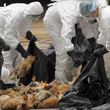
Just as a team of Dutch researchers are pushing to publish the details of how they created an easily-transmitted mutation of the deadly bird flu virus, H5N1 has struck yet again in Hong Kong.
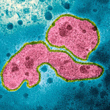
In the wake of a team of Dutch researchers creating a deadly new strain of H5N1 bird flu virus in their lab, the National Science Advisory Board for Biosecurity, overseen by the National Institutes of Health, has asked two journals, Science and Nature, not to publish “experimental details and mutation data that would enable replication of the experiments.”
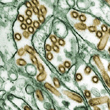
Bioterrorism expert Dr. Thomas Inglesby is alarmed by a team of scientists meddling with the H5N1 bird flu virus and wanting to publish their results.
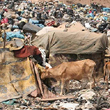
A scene at the end of the movie Contagion portrays the nightmare scenario for a pandemic flu. And it’s basically just waiting to happen so say doctors and scientists.

Three weeks ago, the U.N. warned that avian flu is back on the rise after a five-year decline. A new strain of the H5N1 virus had appeared in China and Vietnam, prompting the alarm.